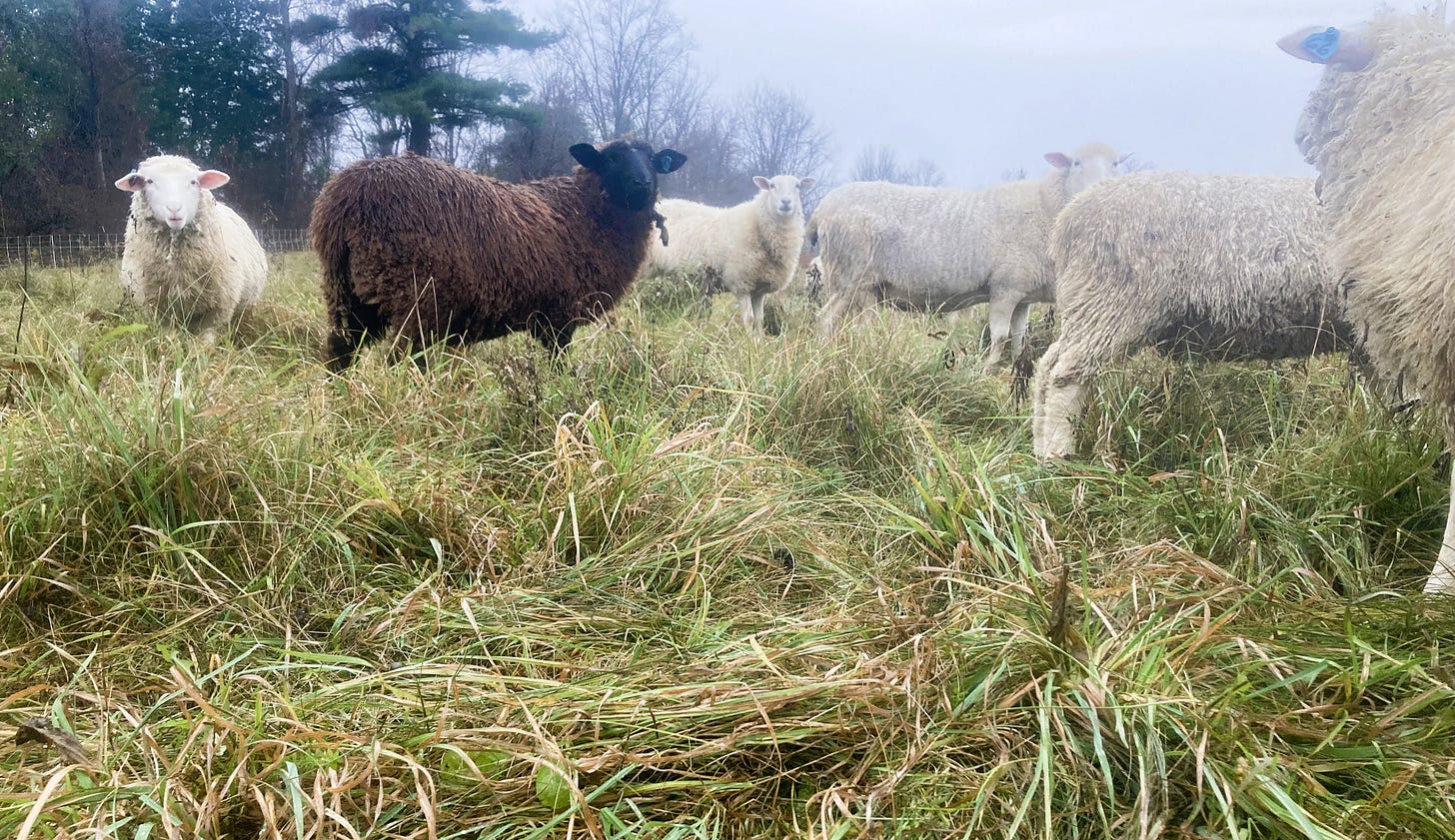Greetings neighbors and strangers,
The Farm rests in the dark womb of night. Light Rain falls outside. I hear her singing on the roof. Yesterday we saw silent snow flurries through the day, felt them on the tips of our noses, the flock and I, as we walked together to the meadow alongside the old road that runs out into the woods. At sunup, should that remarkable blessing indeed arrive, I will step from the house to offer a simple prayer. “Sun, father Sun, you’ve come to grant us another day, here in this meadow where I fumble to learn how to listen and pray, and wonder whether my movements might gather toward something that sounds like a song of human beauty for the world.” Today those movements will be momentous, and consequential, if all goes as planned.
If you don’t farm, it will be difficult for me to describe the significance of friendships between farmers. In my case, I am talking about people who keep cattle and sheep. Our conversations drop easily into a rhythm that will find no necessary end point, just as we don’t sing in order to get to the end of the song. To lay your eyes and ears and heart upon a stretch of meadow and labor to draw human life there from, and then to find others who choose to do the same in a time when they would seem better served by doing almost anything else—this is the quality of companionship I am trying to describe. And I can admit my longing is bone deep to know a life where such conversation is commonplace—at the bank or the post office or up and down the benches at the feasting tables. To hear someone speak from endless hours and days of careful observation bears little resemblance to that which so often stands in for conversation these days—swapping opinions and sound bites about a world at arm’s length. Getting “the news” from a farmer is bound to be a radically local and relational telling, with their agency seated at the head of every story. When I hear someone describe a farmer I know as “busy,” I always offer a gentle reframe: How about “highly engaged.” Or, better yet, “head over heels in love with the work of fashioning human life from the landscape.” Surely the market forces modern farmers to work dangerously long hours, but it is equally dangerous to conflate physical labor with suffering. Love making and giving birth are both physically demanding; thank goodness we still consider those labors worthwhile.
The discontinued Honda Fit hatchback is remarkably well-designed for the task of transporting calves and sheep. This morning I will fold the back seats flat, roll out a heavy plastic tarp to protect the carpet from urine, and then lay down sheets of cardboard for non-slip footing. I’ll bring a couple quarts of the lamb and squash stew from the freezer here as a gift and head south to the place where my friends Kirsten and Taylor sing a love song to an old farm. Kirsten’s loom just barely fits between the rafters of her barn loft-become-weaving studio. She has selected her flock for wool quality and color, with an eye toward the pattern she’ll weave into her next blanket. You might enjoy having a look at some of that she and Taylor and their sheep bring into the world. They call their love song Wollecru.
Kirsten has offered to lend a young Ram for breeding, as a gift, and his fetching is the task that excuses this morning’s drive. On the way home, I will try to ease his stress with songs and descriptions of the beautiful ewes he is soon to meet. I will drive him down the old road to the paddock where they await his arrival. He will stay for just seventeen days, the duration of one heat cycle. His visitation will renew the prayer for life that is this Farm—the prayer for life we call farming. Come mid-April, God(s) willing, the ewes will lay down and make life once again—the whole thing terribly marvelous and uncertain.
Thank you, Kirsten and Taylor.
With care, Adam




